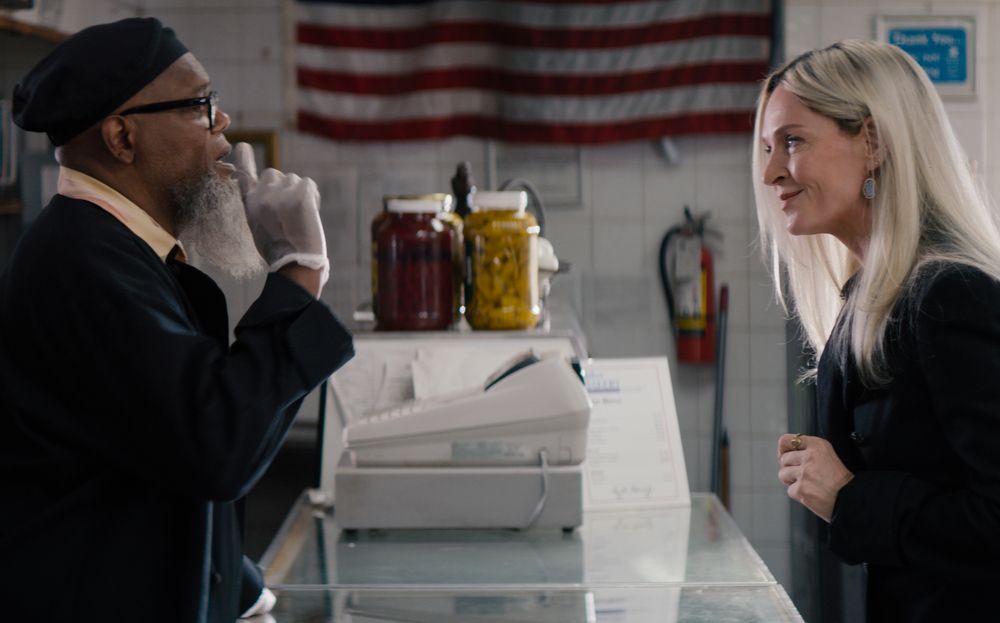The Kill Room

Samuel L. Jackson and Uma Thurman star in THE KILL ROOM. (Photo: Shout! Studios)
Taking some obvious swipes at the shallow and superficial world of art galleries and high-end collectors, The Kill Room doesn’t paint a pretty picture.
In this twisty and violent comedy about dishonor among thieves, a talented cast only slightly elevates a lackluster screenplay exhibiting a collection of labored gags and sketchy characters.
The story follows Reggie (Joe Manganiello), a New York hitman who kills his victims by suffocating them with plastic bags. His handler is Gordon (Samuel L. Jackson), whose Jewish bakery is really a front for his foreign mob ties.
Needing a big score, Gordon approaches fledgling gallery owner Patrice (Uma Thurman) with an idea to launder money by selling fake art through her gallery. Initially skeptical, the pill-popping Patrice’s desperation draws her in.
Reggie is commissioned to paint the fakes under the pseudonym “The Bagman.” It doesn’t matter that they’re garbage. “Collectors don’t buy art because they want it,” Patrice explains. “They buy art because they think they need it.”
Thus begins her effort to focus on private sales rather than the works on display. But when the Bagman improbably gains a following, it brings notoriety that everyone would rather avoid.
Naturally, the scheme goes sideways as the Bagman’s identity comes under scrutiny amid shifting loyalties from social climbers and sycophants, ranging from a rising artist (Maya Hawke) to a rival gallery owner (Dree Hemingway) to a stuffy art critic (Debi Mazar).
Juggling elements of gritty crime drama with screwball satire, director Nicol Paone (Friendsgiving) struggles to build sympathy for the collection of unscrupulous rogues. The film positions Patrice as an ambitious victim of circumstances taking revenge on the snobs who have arbitrarily ostracized her.
Even with mediocre material, it’s nice to see an on-screen reunion between Pulp Fiction co-stars Thurman and Jackson, who brings a welcome charisma to the proceedings — he even mumbles some occasional Yiddish — but his character curiously disappears for long stretches.
The motormouthed dialogue strains to be clever without offering much incentive for emotional investment in the outcome for the paintings or their artists.
Between the caricatured periphery roles and the contrived finale, The Kill Room can’t wrangle its disparate subplots into a cohesive whole. The set-up is more compelling than the payoff.
Rated R, 98 minutes.